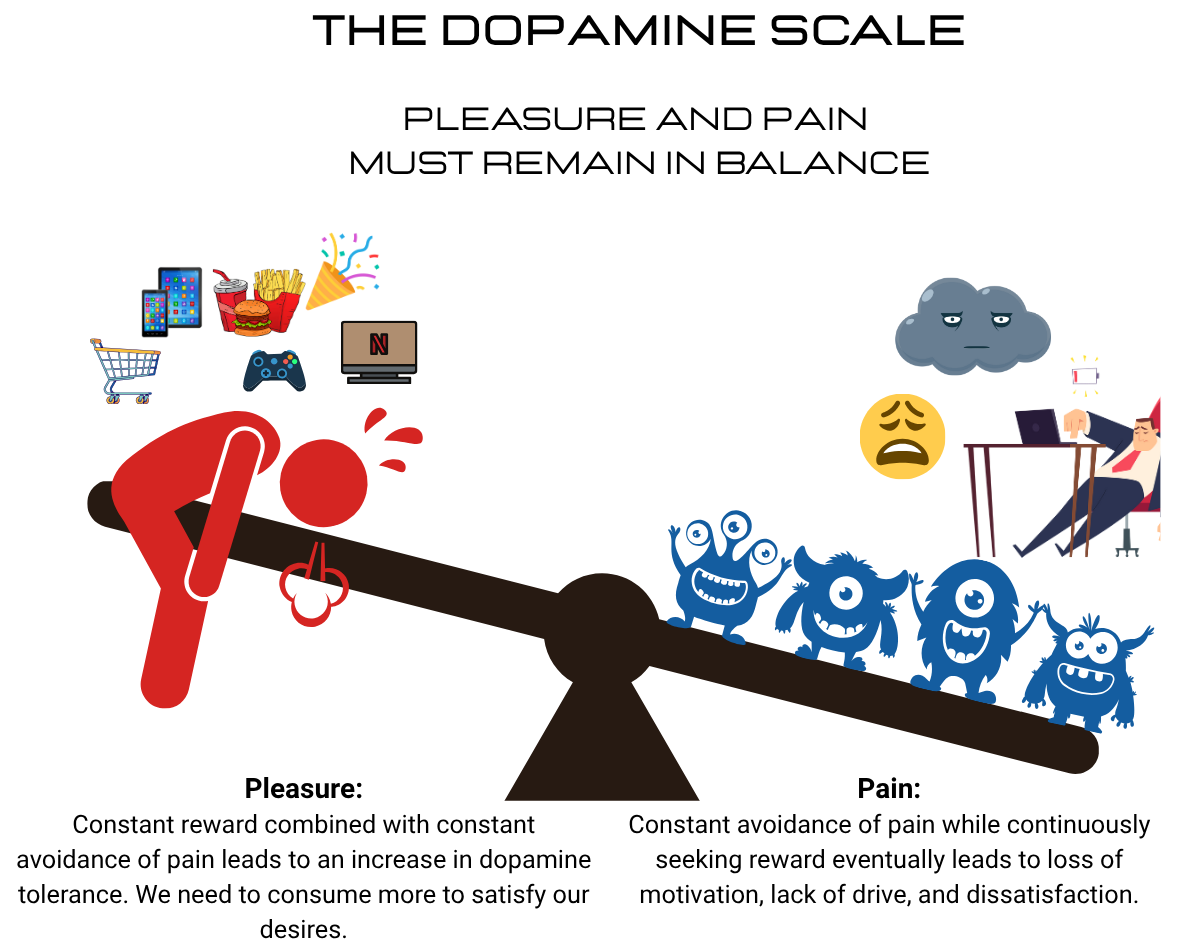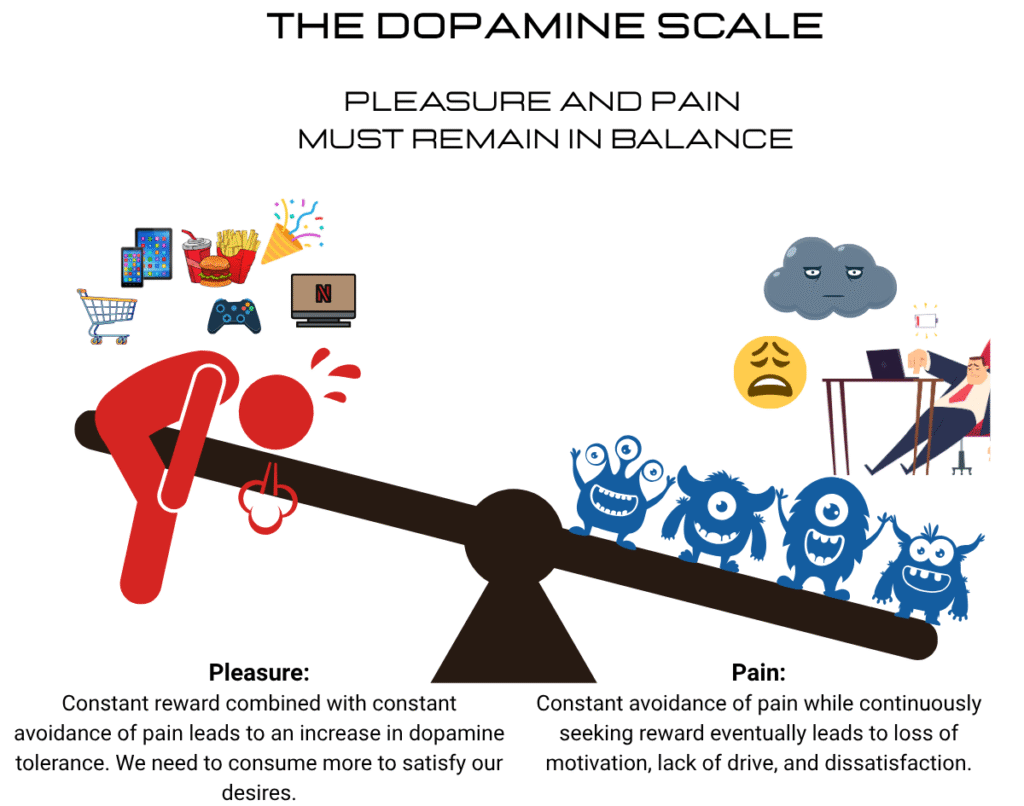The Dopamine System and Self-Development: Why Less Pleasure Leads to Greater Satisfaction

Understanding Dopamine: The Balance Between Pleasure and Pain
Our brain is a product of evolution, shaped in a world of scarcity where survival was the highest priority. It was never designed to handle today’s overstimulating and hedonistic environment where pleasure is instantly available with a single click.
As Dr. Anna Lembke explains in her book Dopamine Nation, pleasure and pain are two sides of the same coin. They are meant to stay in balance. This is a natural principle that has guided human survival for thousands of years.
- Pleasure motivates us to eat, drink, connect, and reproduce.
- Pain protects us from harm, injury, and danger.
Both are essential to our wellbeing, yet neither should dominate the other. When we indulge in pleasure, dopamine floods the brain but every pleasure spike is followed by a “pain aftershock”: feelings of emptiness, restlessness, or irritability.
Conversely, when we expose ourselves to controlled discomfort (like exercise, fasting, or cold exposure) we first feel stress or pain, but then experience a “pleasure rebound”: a sense of calm, clarity, and satisfaction.
How Modern Life Disrupts the Dopamine System
Our brains constantly strive for homeostasis—a state of internal balance. This natural self-regulation keeps pleasure and pain in check. But in the modern world, that balance is broken.
Today, we chase constant gratification and avoid discomfort at all costs. The result? A dysregulated dopamine system.
Each time we pursue instant pleasure, the brain’s “set point” rises. We adapt to high dopamine levels and need more stimulation to feel satisfied. Dopamine goes into overdrive.
What once pushed us to work, hunt, and create now traps us in cycles of overstimulation and fatigue.
The Hidden Dangers of Overstimulation
Modern life bombards us with endless dopamine triggers:
- 🍔 Food and drink are available 24/7.
- 📱 Social media offers infinite scrolling.
- 🛒 Online shopping delivers instant gratification.
- 🎬 Streaming and pornography promise endless entertainment and pleasure.
Our brains are overwhelmed. The rewards are too many, the effort too little.
This imbalance leads to serious consequences:
- Lack of focus and productivity
- Decreasing motivation
- Constant distraction
- Lower self-confidence
- A deep sense of dissatisfaction
Overstimulation has quietly become one of the biggest barriers to mental health and personal growth.

How to Restore Balance: The Power of Conscious Discomfort
The answer isn’t to eliminate pleasure but to redefine it. Real self-development means learning to balance reward and restraint.
To strengthen your dopamine system and regain motivation:
- Move daily. Exercise naturally resets dopamine sensitivity.
- Embrace cold or fasting. Controlled discomfort boosts long-term satisfaction.
- Practice discipline. Delay gratification and focus on meaningful goals.
- Limit digital noise. Reduce quick dopamine hits from screens and notifications.
True growth happens when you make comfort the exception, not the rule.
Mind-Craft: Turning Pain Into Power
This philosophy is at the heart of Mind-Craft: the art of consciously integrating challenges, discomfort, and pain into everyday life to cultivate clarity, strength, and satisfaction.
By rebalancing the dopamine system, we don’t just avoid overstimulation we rediscover purpose, motivation, and deep inner peace.
Conclusion: Build Mental Strength Through Balance
Dopamine connects pain and pleasure into a continuous motivational loop. It drives us to achieve and evolve but only when kept in balance.
True mental health and fulfillment come not from constant pleasure, but from mastering discomfort.
When we step out of short-term comfort and embrace challenge, we activate the brain’s most powerful growth mechanism: the natural, rewarding rhythm of dopamine.
Find out more about this topic on Mind-Craft’s theory page: Dopamine System | Mind-Craft